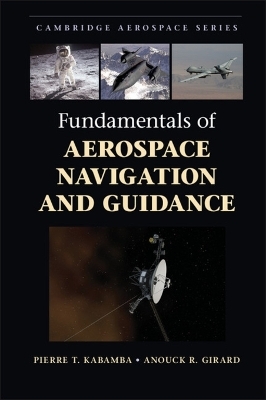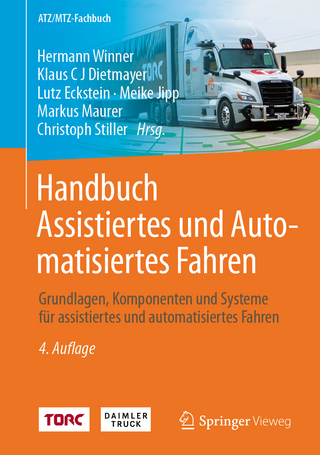
Fundamentals of Aerospace Navigation and Guidance
Cambridge University Press (Verlag)
978-1-107-07094-3 (ISBN)
This text covers fundamentals used in the navigation and guidance of modern aerospace vehicles, in both atmospheric and space flight. It can be used as a textbook supporting a graduate level course on aerospace navigation and guidance, a guide for self-study, or a resource for practicing engineers and researchers. It begins with an introduction that discusses why navigation and guidance ought to be considered together and delineates the class of systems of interest in navigation and guidance. The book then presents the necessary fundamentals in deterministic and stochastic systems theory and applies them to navigation. Next, the book treats optimization and optimal control for application in optimal guidance. In the final chapter, the book introduces problems where two competing controls exercise authority over a system, leading to differential games. Fundamentals of Aerospace Navigation and Guidance features examples illustrating concepts and homework problems at the end of all chapters.
Pierre T. Kabamba is a Professor of Aerospace Engineering at the University of Michigan. Professor Kabamba's research interests include linear and nonlinear dynamic systems, robust control, guidance and navigation, and intelligent control. His recent research activities are aimed at the development of a quasilinear control theory that is applicable to linear plants with nonlinear sensors or actuators. He has also done work in the design, scheduling, and operation of multi-spacecraft interferometric imaging systems used to obtain images of exosolar planets. Moreover, he has also done work in the analysis and optimization of random search algorithms. Finally, he is also doing work in simultaneous path planning and communication scheduling for unmanned aerial vehicles (UAVs) under the constraint of radar avoidance. He is author or co-author of more than 170 publications featured in refereed journals and conferences and of numerous book chapters. Professor Anouck Girard's interests include nonlinear control and systems engineering with applications in unmanned vehicle systems; hybrid, distributed, and embedded systems; maneuver coordination; and control of vehicles and mobile ground, air, and ocean robots. She is the director of the Aerospace Robotics and Control (ARC) Laboratory, in which cooperative control algorithms are developed and implemented in small and micro air vehicles and/or ground robots, and the principal investigator and director of the Michigan/AFRL Collaborative Center in Control Science (MACCCS) since 2007.
1. Introduction; 2. Deterministic systems theory; 3. Stochastic systems theory; 4. Navigation; 5. Homing guidance; 6. Ballistic guidance; 7. Midcourse guidance; 8. Optimization; 9. Optimal guidance; 10. Introduction to differential games; Epilogue; A. Useful definitions and mathematical results; A.1. Results from topology; A.2. Results from linear algebra; A.3. Taylor's theorem; A.4. Newton's method; A.5. The implicit function theorem.
| Reihe/Serie | Cambridge Aerospace Series |
|---|---|
| Zusatzinfo | Worked examples or Exercises; 26 Halftones, unspecified; 95 Line drawings, unspecified |
| Verlagsort | Cambridge |
| Sprache | englisch |
| Maße | 183 x 261 mm |
| Gewicht | 880 g |
| Themenwelt | Technik ► Fahrzeugbau / Schiffbau |
| Technik ► Luft- / Raumfahrttechnik | |
| Technik ► Maschinenbau | |
| ISBN-10 | 1-107-07094-5 / 1107070945 |
| ISBN-13 | 978-1-107-07094-3 / 9781107070943 |
| Zustand | Neuware |
| Haben Sie eine Frage zum Produkt? |
aus dem Bereich


